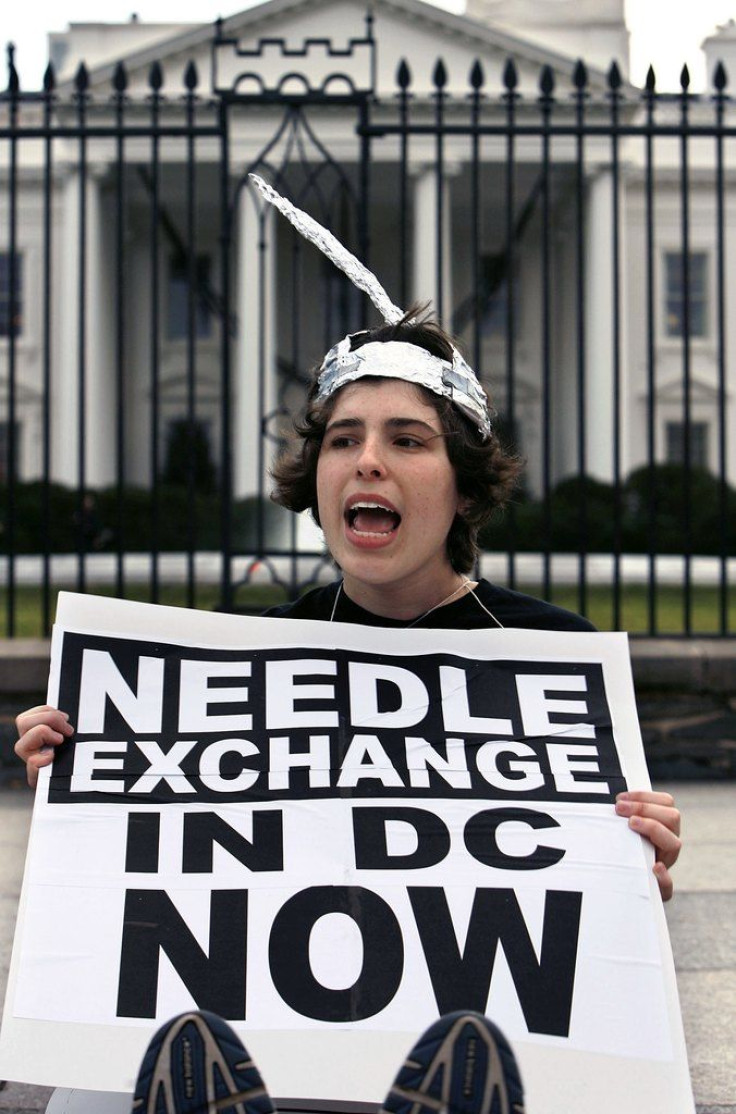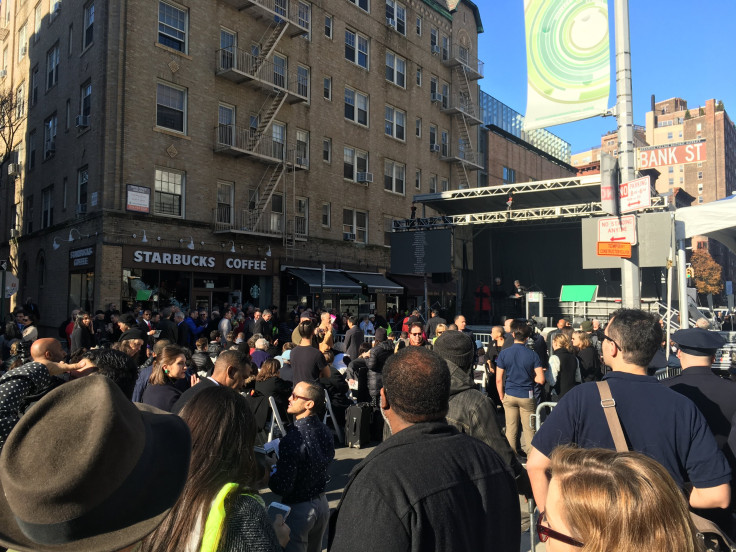HIV Prevention: Opioid, Heroin Epidemic Could See Rise In AIDS Transmission With Increased Drug Use

Hundreds of people gathered near the steps of St. Vincent's Hospital in New York on World AIDS Day Thursday, congregating at the epicenter of the AIDS epidemic that struck the nation in the 1980s. The crowd listened with quiet reverence as the names of some of the 100,000 people who died in the city since the epidemic's deadly heyday were read. With the flip of a sign, the patch of grass outside the hospital was declared the NYC AIDS Memorial Park at St. Vincent's Triangle.
"This is not just a memorial," said New York City Comptroller Scott Stringer. "This structure is a call to arms because this disease is far from over."
No longer a death sentence, significant progress has been made in preventing and treating HIV and AIDS over the past 30 years. But the recent rise of opioid use in the United States has cast a deadly pall over that progress, leaving the threat of a possible resurgence of the disease in its wake.
A significant portion of people who become addicted to prescription opioids move on to injectable drugs like heroin for a more efficient and stronger high, and the majority who inject drugs don't use sterile needles exclusively, according to a report released Nov. 29 by the Centers for Disease Control and Prevention. Nine percent of new HIV infections each year in the U.S. are among people who inject drugs. While the number of diagnoses among intravenous drug users has decreased around 90 percent since its peak in 1993, the rise of intravenous drug use that appeared alongside the recent opioid epidemic could result in higher rates of HIV across the country.
"There's definitely a concern that injection drug use is going to increase as a result of the opioid epidemic and that's a primary risk factor for HIV," Dr. Cyprian Wejnert, an epidemiologist with the CDC's Division of HIV and AIDS Prevention, told International Business Times. "So for us, there's the corresponding concern that HIV is going to then increase because of increased injection drug use."

Such a spike in cases rocked a small community in Indiana in 2015. In Scott County, a community of only 4,200 people, 135 people were diagnosed with HIV that year. Nearly all of them reported injection drug use.
"One thing we learned talking to people in Indiana...was that people didn't realize that they weren't using sterile needles," said Wejnert, who studied the county's outbreak. Wejnert said that although many drug users entered injection events with their own sterile needles, by the end of the process their needles were unknowingly contaminated.
Rural areas like Scott County are typically less at risk for HIV than densely populated urban areas and therefore far less equipped to deal with such an outbreak, but a rise in intravenous drug use could make similar rural epidemics commonplace. In the wake of the devastation in Indiana, states are redoubling their efforts to prevent a similar outbreak from happening anywhere else.
"I'm surprised we haven't seen more [cases of HIV]," said Dr. Sharon Stancliff, medical director of the Harm Reduction Coalition, a New York-based needle exchange program aimed at helping drug users. "But it could be that nobody's noticed yet because they're not testing sufficiently. We just don't know what might be happening out there."
States have begun emphasizing syringe exchange programs as a way to provide intravenous drug users access to clean needles and limit the spread of transmittable diseases like HIV and Hepatitis C. In many rural areas, however, needle exchange programs are nowhere to be found and education for drug users is scarce.
"There are legal barriers because there's plenty of people in government who still believe that if you don't give people needles they won't inject," said Stancliff. "We know that's not true. We also know they're still going to have sex if you don't give them condoms."
Certain communities have rejected syringe exchange programs because of misconceptions about the organizations. Syringe exchange programs typically also provide education, referrals to drug treatment centers and other often inaccessible information.
"People are afraid to have them near them because it's like, 'not in my neighborhood, this doesn't happen, nobody is injecting drugs," said Stancliff.
In Virginia, where a public health emergency was declared in November due to a skyrocketing number of overdose deaths from opioid use, no syringe exchange programs are available. Emergency department visits from heroin overdoses in Virginia increased 89 percent from January to September when compared with the same period in 2015.
"So far, the good news is that drug injection is not playing a role in HIV transmission increases at this point," Diana Jordan, director of the Division of Disease Prevention in the Virginia Department of Health's Office of Epidemiology, said. "But we do see some increases in Hepatitis C in the past year, and that's an early warning sign that we need to stay vigilant and step up prevention efforts."

Medical professionals and lawmakers in Louisiana, where opioid prescriptions outnumber residents, are intensifying their efforts to curb opioid abuse and prevent the spread of HIV. Louisiana has the fourth highest rate of AIDS in the U.S. and the third highest rate of HIV. The perception of the disease in the state serves as a hindrance to prevention efforts.
"In this day and age, there is still a ton of stigma around HIV infection status and around IV drug use," Dr. SreyRam Kuy, chief medical officer for Medicaid at Louisiana's Department of Health, said. "When we as a community say together, that it's far more important that the people of Louisiana get treated, are healthy and are preventative than worrying about the stigma, then absolutely, we can see the needle on this problem change."
States are leaning on one another to learn what works and what doesn't when it comes to preventing the spread of HIV among intravenous drug users.
“The opioid epidemic is something that affects all of us. It affects our neighbors, it affects our children, it affects our parents,” said Kuy. “As a community, when we come together and cooperate and work across agencies and work across communities and we tackle this with the commitment that we can overcome it, we can make that change and we can absolutely save lives.”
© Copyright IBTimes 2024. All rights reserved.












